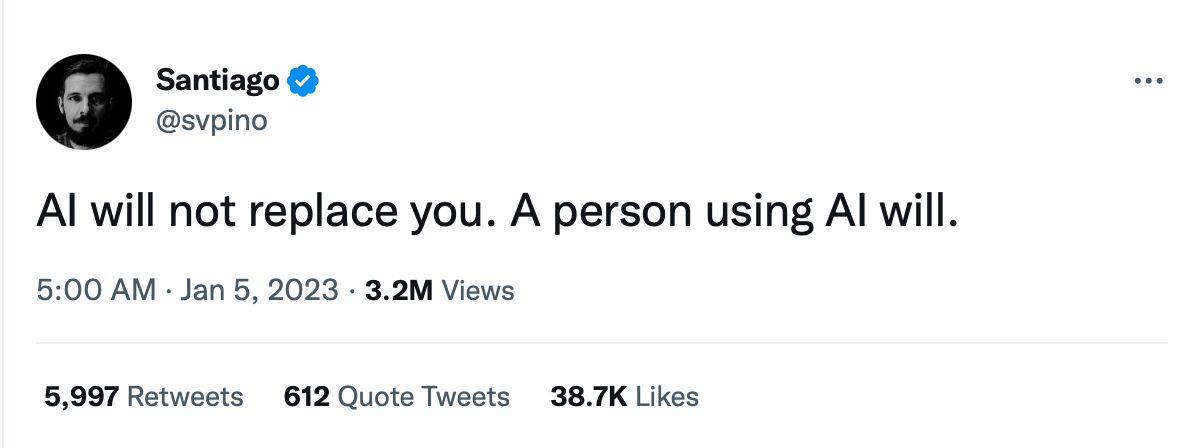Everyone is worried that they will get ‘replaced’ by AI at some point. But what we are observing as we work with customers is that working with AI is a *brand new* set of skills that need to be mastered: prompt mastery, training models, piping outputs, data availability etc.
So it is more likely that rather than an AI replacing you, a professional who understands and uses AI will have an advantage and might replace you in the future.
Here is the core concept: AI will not replace jobs, AI will replace specific activities of the job.
AI will augment human capabilities and create new opportunities for professionals who understand and use AI. It could be creative work, or data analysis, or coding.
This will free up more time for professionals to focus on higher-value activities such as creativity, problem-solving, and strategic thinking.
As more and more companies adopt AI, there will be a growing demand for professionals who can work with AI systems and extract insights from the data generated by them.
Also, professionals who are able to use AI to create new products and services, will be able to create new opportunities in the market, for example, in areas such as predictive analytics, machine learning, and natural language processing.
What are you your thoughts on the future of work with AI? Please share in the comments below.
#futureofwork #ai #chatgpt #predictiveanalytics #opportunities

